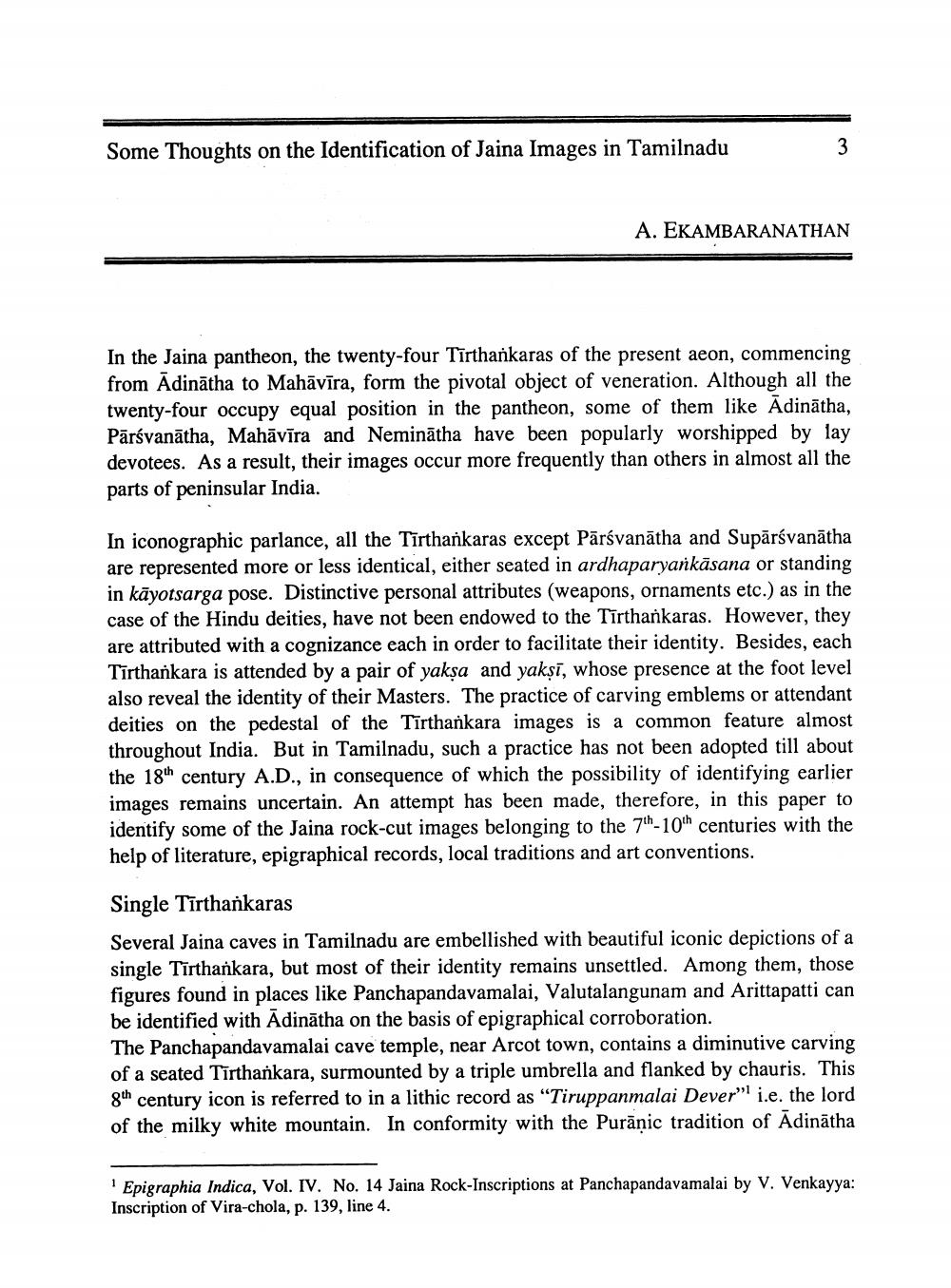________________
Some Thoughts on the Identification of Jaina Images in Tamilnadu
A. EKAMBARANATHAN
In the Jaina pantheon, the twenty-four Tīrthankaras of the present aeon, commencing from Ādinātha to Mahāvīra, form the pivotal object of veneration. Although all the twenty-four occupy equal position in the pantheon, some of them like Adinātha, Pārsvanātha, Mahāvīra and Neminātha have been popularly worshipped by lay devotees. As a result, their images occur more frequently than others in almost all the parts of peninsular India.
In iconographic parlance, all the Tīrthankaras except Pārsvanātha and Supārsvanātha are represented more or less identical, either seated in ardhaparyankāsana or standing in kāyotsarga pose. Distinctive personal attributes (weapons, ornaments etc.) as in the case of the Hindu deities, have not been endowed to the Tīrthankaras. However, they are attributed with a cognizance each in order to facilitate their identity. Besides, each Tīrthankara is attended by a pair of yakṣa and yakși, whose presence at the foot level also reveal the identity of their Masters. The practice of carving emblems or attendant deities on the pedestal of the Tīrthankara images is a common feature almost throughout India. But in Tamilnadu, such a practice has not been adopted till about the 18th century A.D., in consequence of which the possibility of identifying earlier images remains uncertain. An attempt has been made, therefore, in this paper to identify some of the Jaina rock-cut images belonging to the 7th-10h centuries with the help of literature, epigraphical records, local traditions and art conventions.
Single Tīrthankaras Several Jaina caves in Tamilnadu are embellished with beautiful iconic depictions of a single Tīrthankara, but most of their identity remains unsettled. Among them, those figures found in places like Panchapandavamalai, Valutalangunam and Arittapatti can be identified with Ādinātha on the basis of epigraphical corroboration. The Panchapandavamalai cave temple, near Arcot town, contains a diminutive carving of a seated Tīrthankara, surmounted by a triple umbrella and flanked by chauris. This 8th century icon is referred to in a lithic record as "Tiruppanmalai Dever” i.e. the lord of the milky white mountain. In conformity with the Purāņic tradition of Ādinātha
Epigraphia Indica, Vol. IV. No. 14 Jaina Rock-Inscriptions at Panchapandavamalai by V. Venkayya: Inscription of Vira-chola, p. 139, line 4.




